Anglo-Saxon England to 1066
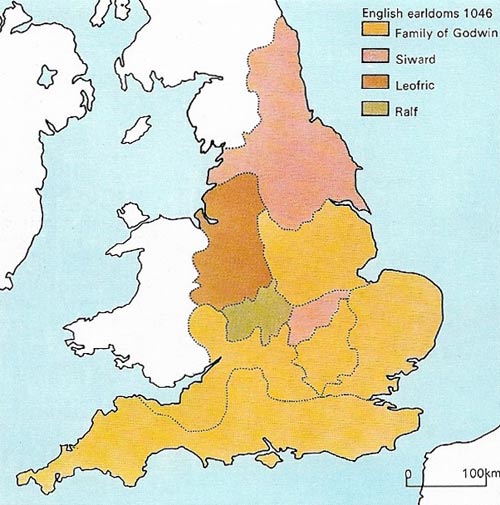
Figure 1. The great earldoms of Edward's reign were a result of Canute's policy of land distribution. Godwin himself had been an obscure soldier who rose to prominence in the service of the Danish king. In many areas, particularly Sussex and the west, he held considerably more land than the king, and the local thegns showed as much loyalty to him as to the king. Leofric and Siward, the other leading earls of Edward's reign, were unwilling to see their countryman Godwin acquiring unlimited power over the king. The distribution of earldoms on the map shows the power of the House of Godwin at its peak in 1051.
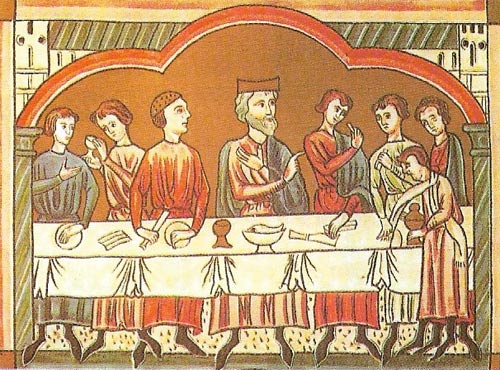
Figure 2. Edward (center) quarrelled with Godwin (right foreground) in 1051 over the latter's apparent disregard for his son Sweyn's irresponsibility in 1046–1049. But in 1052, the Earl Godwin was able to return virtually unopposed because Edward's policy of encouraging Normans at his court was unpopular (it was at this time that Edward is said to have promised the throne to William of Normandy). Although Godwin died in 1053, Harold was able to take advantage of this sympathy and take virtual control of the country until the death of Edward.
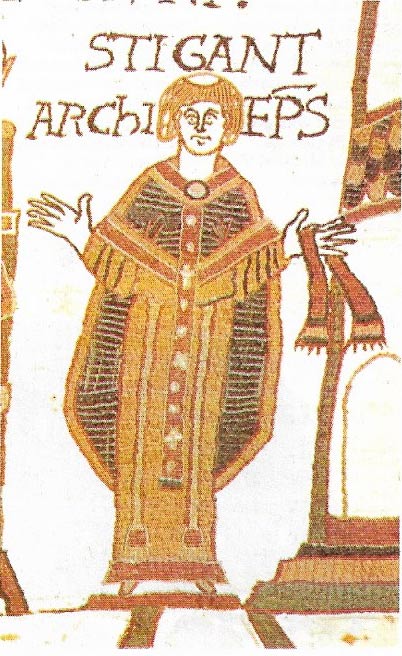
Figure 3. Stigand, an infamous pluralist, was Archbishop of Canterbury in 1066, but William, an ardent supporter of Cluniac reform, replaced him with Lafranc, who introduced feudalism to the Church.
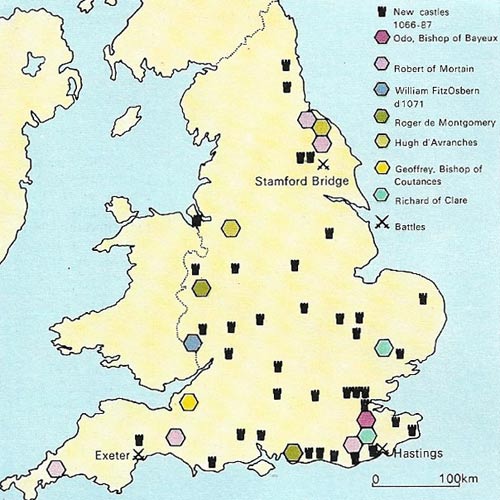
Figure 4. William allocated the land of England in such a way as to allow his invading forces to control the country. He built castles in the towns, and gave estates to his followers, who were spread throughout the kingdom to prevent any of them from gaining local power as Godwin had done. The south of England, the most strategically vital area, remained in the hands of a few trusted friends. But he gave the lands of more than 2,000 thegns to fewer than 200 Norman barons, and so radically centralized the power structure of England. William kept large estates for his own use. The introduction of feudalism was perhaps the most dramatic effect of his rule.
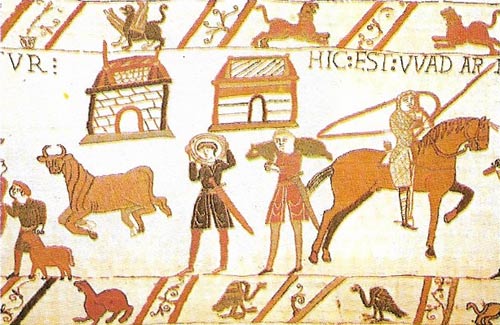
Figure 5. The revolt of the north, in 1069, was punished by William with such severity that the Domesday Survey, of 20 years later, shows the most affected areas – Yorkshire and Lancashire – are still far less prosperous in agriculture than the rest of the country. Such brutality, and the force with which the Normans cleared the centers of towns to build castles to overawe the populace, meant that many Englishmen hated the invaders. Although the Normans ended the Anglo-Saxon institution of slavery, they reduced freemen to the level of serfs and cut the authority of the common law.
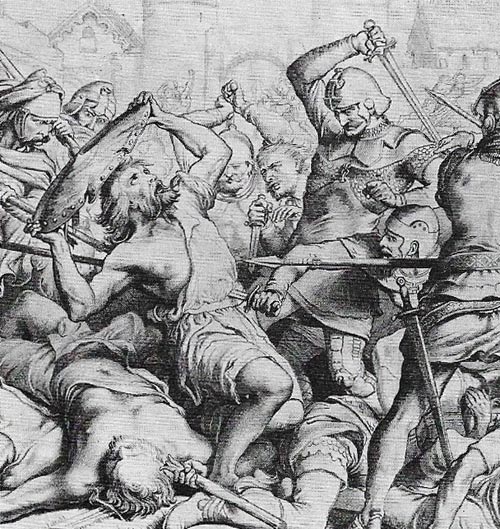
Figure 6. Hereward the Wake was a semi-legendary English thegn who carried on opposition to William from a hideout in the Fens of East Anglia. Before the Conquest he had held significant estates in Lincolnshire. But opposition to the Normans as violent as shown in this 19yj-century illustration was not common; most English accepted the new king and by the early 12th century it was common for a man of English descent to become a royal official such as a sheriff. At the end of the story of Hereward, it is said that he was pardoned by the king. Only two Englishmen survived the Conquest s important landowners; others became managers of their old estates.
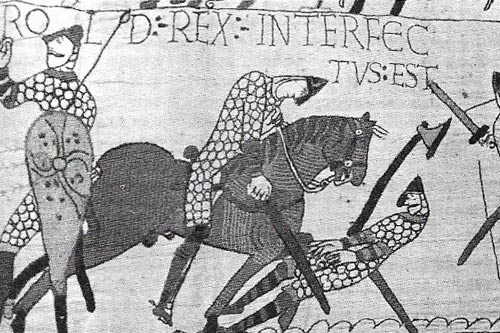
Figure 7. Harold was killed at Hastings either by an arrow in his eye or, as is more likely, by being cut down by a Norman horseman. His army of about 7,000 men consisted of both the traditional Anglo-Saxon king's band of followers, and the fyrd, or local militia comprising less well-trained soldiers who were called out to deal with emergencies. After the battle, William advanced swiftly to London before any significant new opposition could be organized around the last remaining member of the English royal family, Edgar the Aethling. William founded a monastery on the site of the battle, a symbol of the unity of political power and religious duties for a Norman.
Edward the Confessor (c. 1002–1066) lived in exile in Normandy for 25 years during the reigns of Canute and his sons and succeeded to the English throne in 1042. His mother, Emma (died 1052), was a Norman and although there may not have been much love lost between Edward and Emma, he probably thought of himself as at least half Norman. He brought Norman followers with him to England, including Robert of Jumieges (died c. 1055) whom Edward made Archbishop of Canterbury in 1051 despite opposition from the earls. In a sense, therefore, Edward began the process, completed by William, of a transition from an English to a Norman society. Even royal castles, so much a part of of William's conquest, were introduced in a primitive form by Edward.
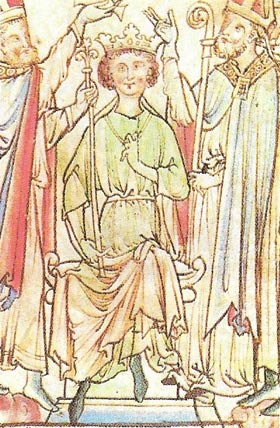 |
| Edward the Confessor was the last truly English king of England, because Harold was Danish by descent. The son of Ethelred II, he ruled over a court of Danes, Englishmen, and Normans. This cultural mixture arose from the wealth and strength of the English throne in this period, which encouraged the ambitious Norsemen to invade the country. It was only the simultaneous attack on England on two fronts in 1066 that brought the downfall of the Anglo-Saxon kingdom. Although not such a great landowner as William became, Edward still commanded great authority through the veneration in which the monarchy was held. |
The rise of Godwin and Harold
Edward's reign was constantly over-shadowed by the power of the family of Godwin (died 1053). Under Canute England had been divided into a few large earldoms, not unlike the old Saxon kingdoms. This consolidation produced a new and dangerous political situation, with a few earls controlling great territorial interests (Figure 1). Much of the history of Edward's reign concerns quarrels between himself and these earls, and between members of the Godwin family, which controlled most of southern England.
Edward married Edith the daughter of Godwin, in 1045, and it seemed at first that Godwin controlled the country. But in 1051 the earl refused to obey Edward's order to subdue Dover, a town in Godwin's own earldom where disturbances had taken place. Open conflict was averted by Siward and Leofric, the other important earls, who supported the king. Edward exiled Godwin's entire family, but the following year Godwin returned, secure in his authority within his earldom, where his territorial control was much greater than that of the king. The mutual dependence of king and earl had been made apparent.
Toward the end of his reign Edward turned increasingly towards thoughts of piety and he left much of the detail of government to Harold (c. 1022–1066), Godwin's son. At some time Harold visited France and fell into the power of William of Normandy (1027–1087), who extracted from him an oath of support for his own claim to the English throne. Edward and Edith had no children (the king's reputation for piety derived from a legend that he never consummated his marriage), but toward the end of Edward's life an English candidate for the throne appeared, Edward the Aethling, son of the Confessor's brother. The Aethling died soon after his return from exile (c. 1059), leaving a son, Edgar (c. 1050–c. 1130), too young to be a serious candidate for kingship, and a daughter who later became St Margaret of Scotland (died 1093). So when Edward died in January 1066, Harold proclaimed himself king and was crowned in Westminster, supported by Edward's council.
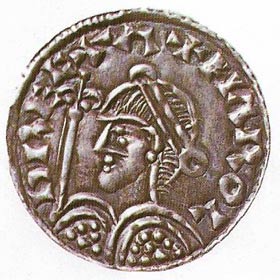 |
| Harold, the son of Godwin, was accepted as king on Edward's death, although Edward had probably offered the throne to William of Normandy, and Harold had sworn to support him. |
The Norman invasion
Since the death of Canute, Norwegian and Danish rulers had been awaiting an opportunity to renew their claim to England. In 1066, after defeating the Danes, Harald Har-drada (1015–1066) of Norway set sail for England, with the support of Tostig, the son of Godwin. The English king decisively defeated his northern enemies at Stamford Bridge but then had to march from York to Hastings to meet the second enemy, William, who had landed at Pevensey on 28 September to assert his own claim to the throne. William brought new military skills to England, using ranks of lancers on horseback against the traditional English foot-soldiers fighting with axe and sword. Nevertheless, the Norman victory at the Battle of Hastings, fought on 14 October, was not a foregone conclusion and owed much to the exhaustion of the English.
England after the Conquest
The Battle of Hastings is depicted on the Bayeux tapestry (Figures 5 and 7), a long embroidery completed c. 1080, perhaps commissioned by Bishop Odo of Bayeux (c. 1036–1097). William refused to be crowned by Stigand, Archbishop of Canterbury (died 1072), whom he replaced in 1070 with Lanfranc (c. 1005–1089), an Italian monk. After a rebellion in Exeter in 1067, and in the north in 1069, drastic measures were taken to bring the country under control (Figure 5). There were a few pockets of resistance (Figure 6) but much of the English nobility had died in battle; their heiresses often married Norman barons.
A uniform system of land tenure was imposed, all land being distributed in return for specific military services, which facilitated long-term garrisoning of the castles that defended Norman rule (Figure 4). In order to establish precisely the obligations of his tenants, William ordered a survey to be made of his new possessions – the Domesday Survey, completed in 1086.
Much of the Anglo-Saxon way of life disappeared with the ending of free land tenure for the thegn and ceorl. Some legal institutions continued in a debased form, but art and literature, which had been flourishing at that time, died out. Fifty years after the Conquest, the distinction between English and Norman had been lost. The Conquest gave new vitality to the towns, reorganized the Church and brought England closer to the culture of Europe; in many ways it can therefore be considered the beginning, as much as the end, of an era of English history.
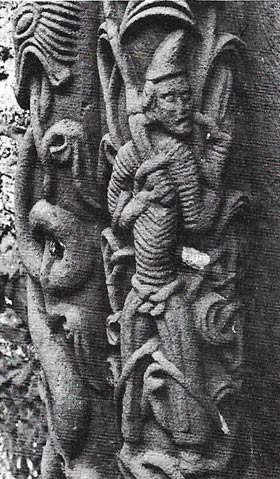 |
| The late Anglo-Saxon stone at Kilpeck Church, Herefordshire, is on e of the few examples of an English cultural survival after the Conquest. In most other respects, a sharp change occurred after 1066, Norman-French and Latin became the official languages, and vernacular literature died out, a learning became more completely the province of the Church, and secular literacy became less common. But the Anglo-Saxon Chronicle was still written until the early 12th century. The Church itself was revitalized from the torpor into which it had fallen since 1020. Stone architecture on a massive Romanesque scale became common for churches and castles. |
